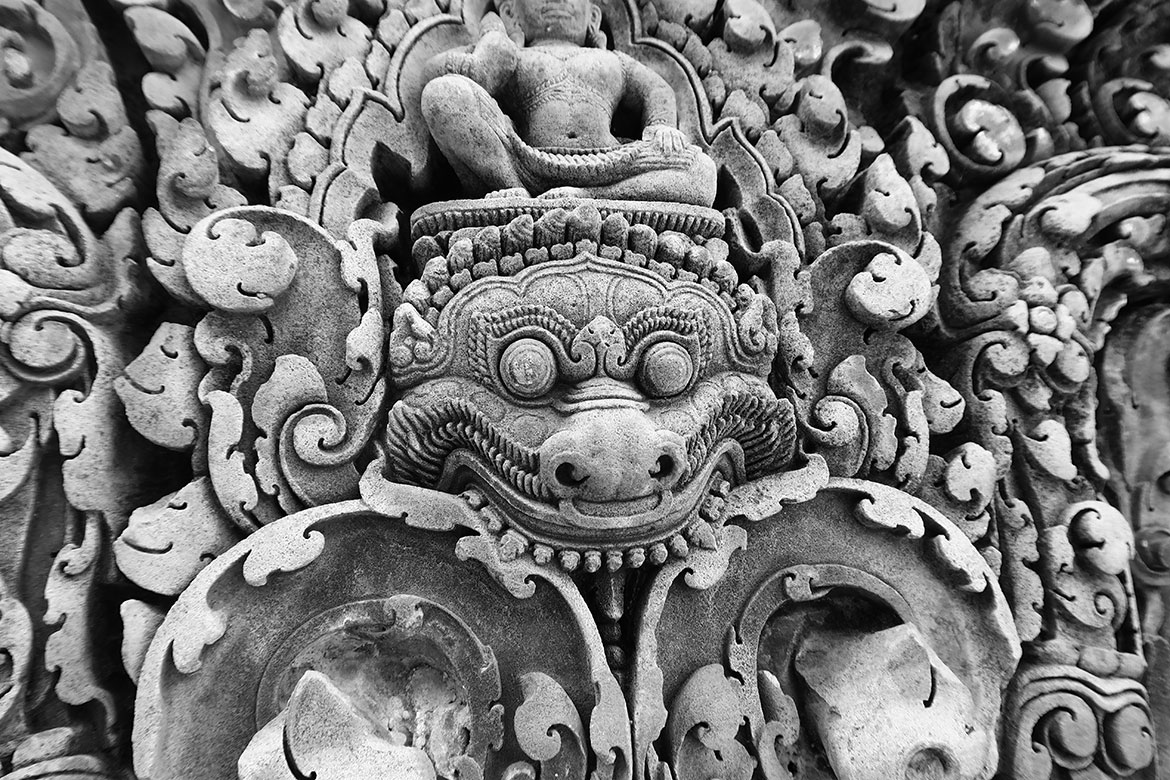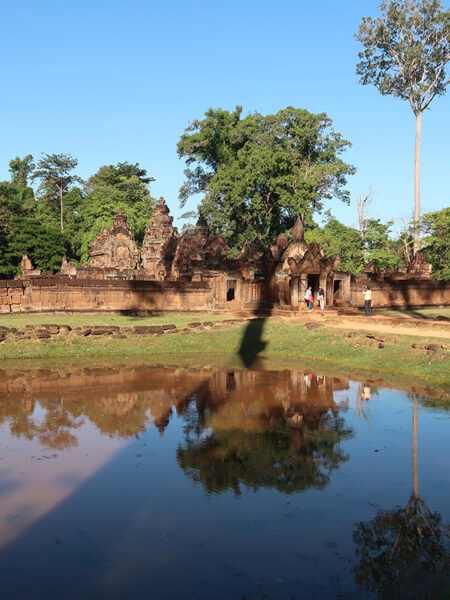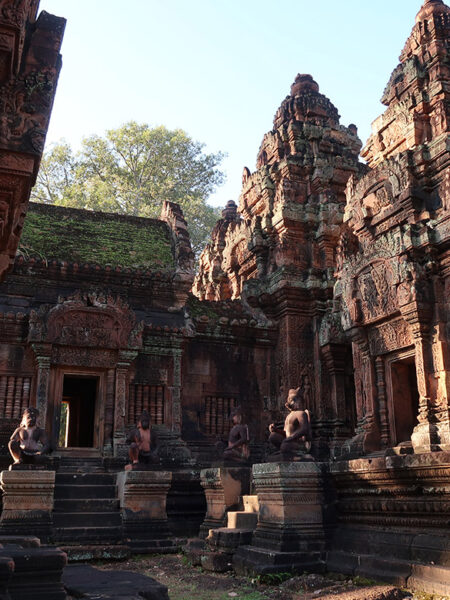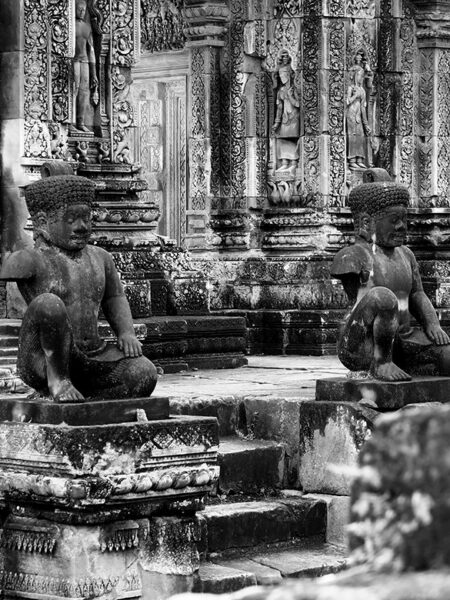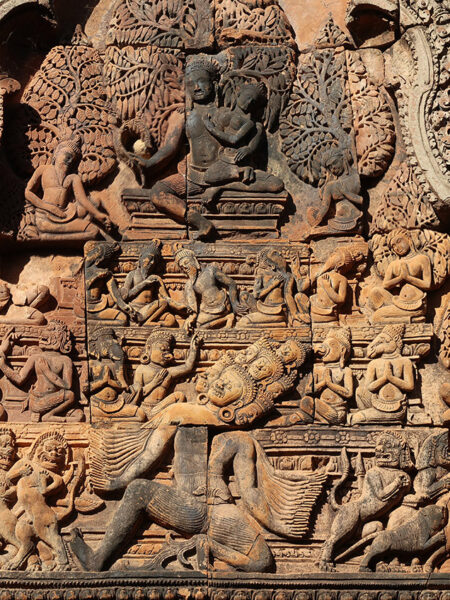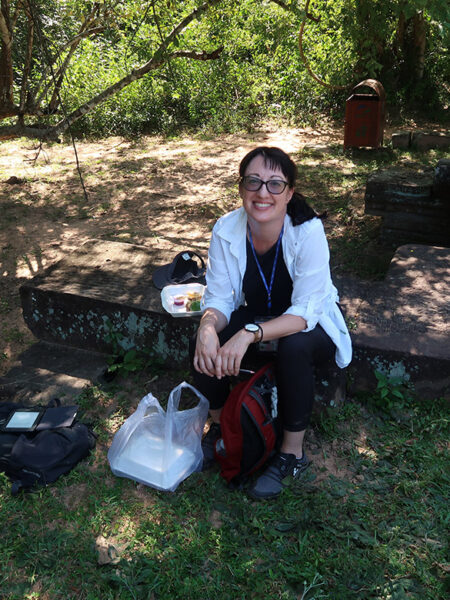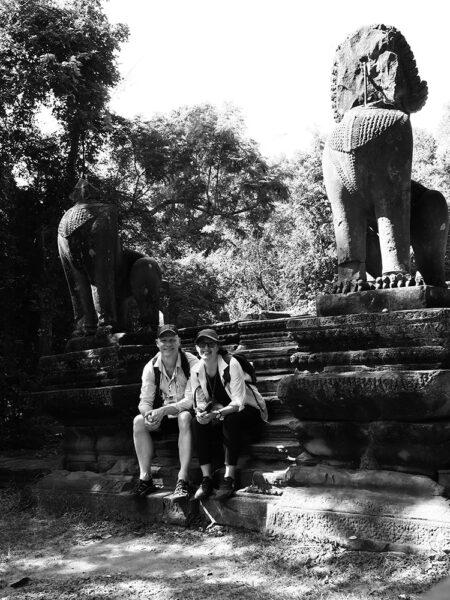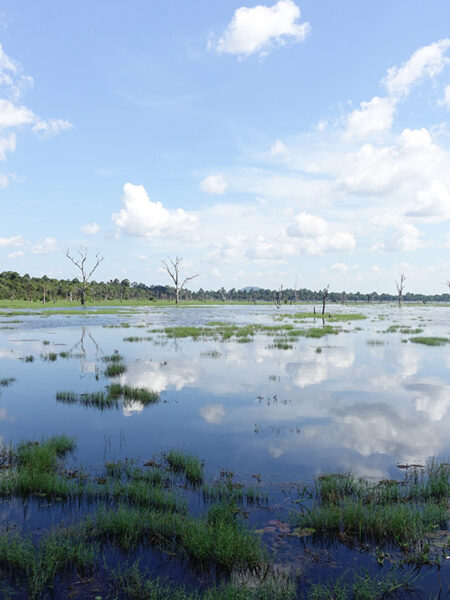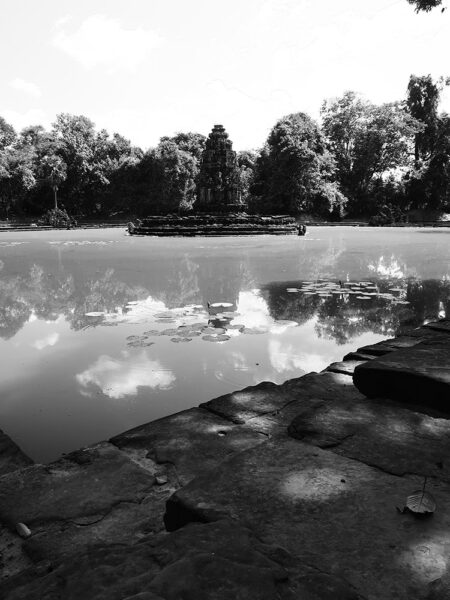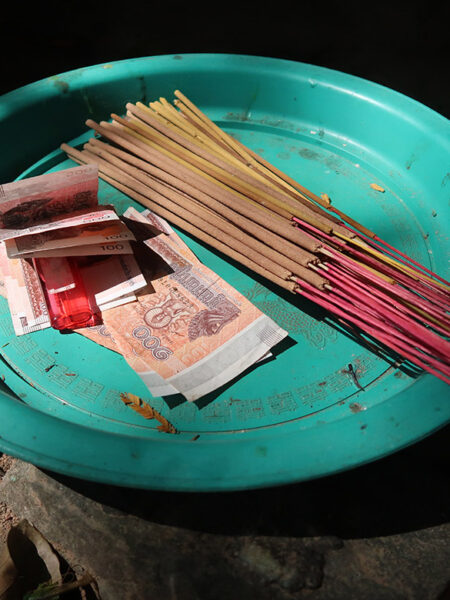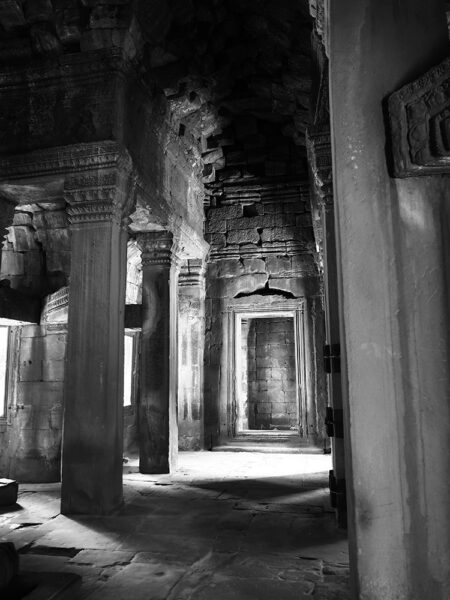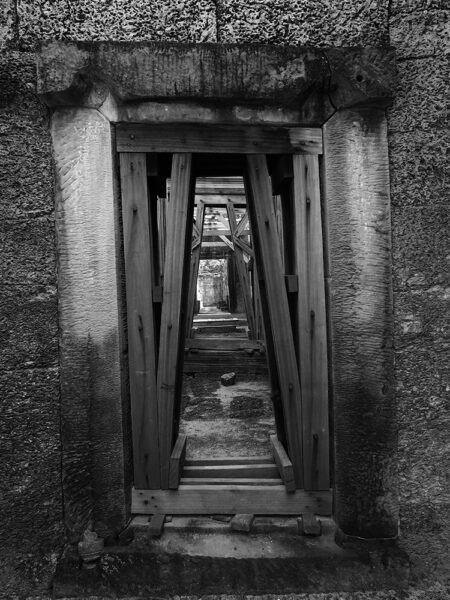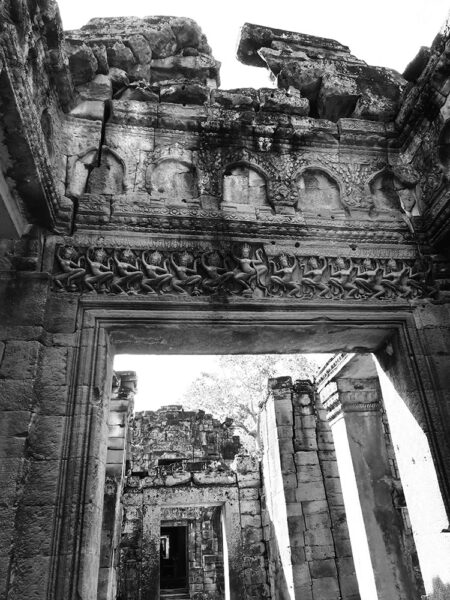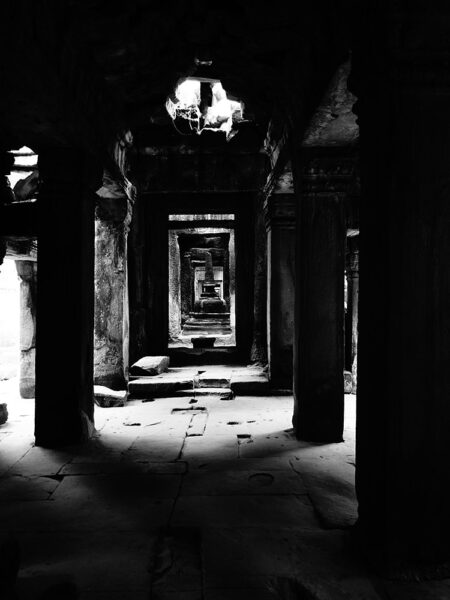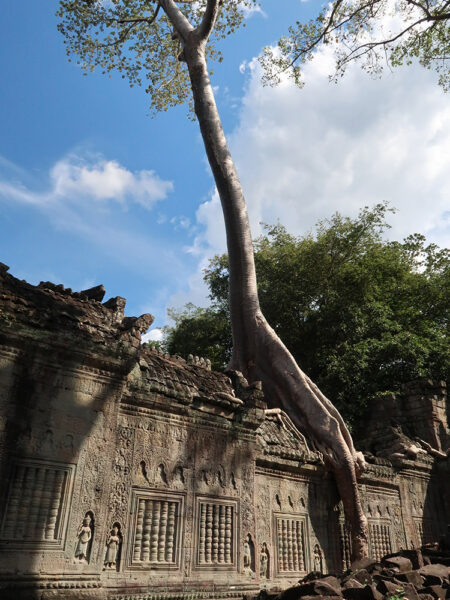Chheab picked us up at 6.30am, and we drove through the monumental south gate of Angkor Thom and northwest to Banteay Srei, about 20km beyond. The roads were much rougher, but it was good to get a bit away from the main tourist route.
Banteay Srei is a stunning, atmospheric little temple of pinkish stone with beautiful, well preserved carvings, and we had it almost to ourselves at opening time.
Today we followed a more detailed guidebook on my Kindle—Guide to the Temples of Angkor by Approach Guides—and I took more time to identify and read out descriptions of the bas-reliefs. We really began to understand how individual the different temples are in character.
Next stop was Banteay Samré, surrounded by a huge wall. We sat near the ruins of a long causeway leading up to the temple and ate our packed breakfast. Walking back along the causeway I reached the point were it faded into the jungle, then turned around and imagined the growing awe a visitor of the time would have felt as they walked along it towards the magnificent main structure. Again, not too many people were around, and we took our time scrambling over the ruins, hunting for small carvings described in the guidebook.
Back in the car, Chheab suggested we stop at the The Cambodia Landmine Museum and Relief Center, a place we’d wanted to visit but hadn’t realised was nearby. This little locally-run museum was set up by a man known by his Japanese nickname Akira, who was once a child soldier but has dedicated his life to clearing Cambodia of landmines , and helping and educating children harmed by them. It was horrifying to see so many weapons of death—mostly of US, Russian, or Chinese manufacture. Now rusted and useless hunks of metal, they were once so deadly and life-changing. It was also horrifying to discover that the Ottawa Treaty to ban landmines, signed by some 160 countries, has not been signed by any of those three countries. Even the US, despite the obscene number of bombs that they dumped on Cambodia over a ten year period during the Vietnam War.
As always, the bastards who caused the problems leave others to do the cleaning up, and innocents suffer.
Heading back towards Siem Reap, we stopped at Neak Poan, a tiny temple reached after a long walk on a narrow wooden causeway across a shallow lake. It sits in the centre of an artificial pond surrounded by four other ponds representing Water, Earth, Fire and Wind.
Finally, our last temple of the day was Preah Khan, a large temple of long, dark corridors, a hall of dancing apsara (female spirit) carvings, with a central chamber in which a small stone stupa rested. A huge tree grew out of and on top of one of the outer walls. As we left two young Australians from Perth University asked us to complete a survey they were conducting about the temple, which we happily did.
Chheab took us back to the hotel. We had a drink by the pool, I had a swim, and we started planning out the next few days. Later we got a tuk tuk into town and ate at a restaurant called Paper Tiger, up on a terrace overlooking the busy, buzzy Pub Street. The food was excellent—we both had the local curry dish amok—and we followed it up with a trip back to the gelato place.
Another wonderful day experiencing incredible 12th century jungle temples … more tomorrow.

